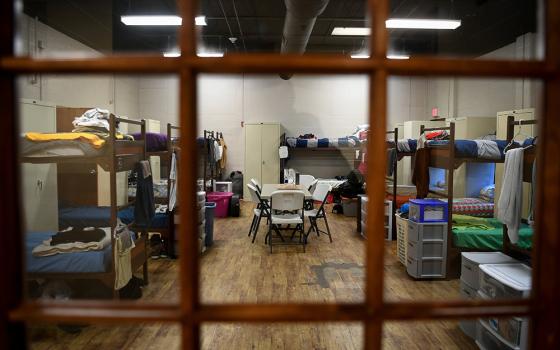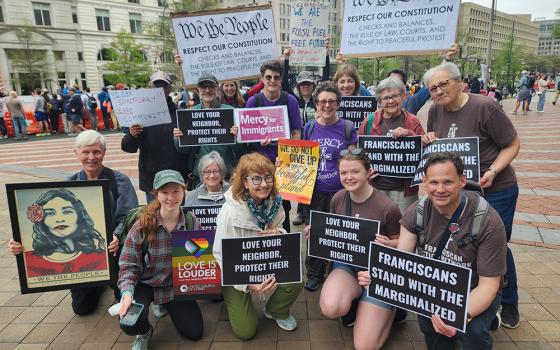PITTSBURGH -- The entrance to the Vatican Splendors exhibit evokes a part of St. Peter’s Basilica that few tourists ever see: the archaeological excavation beneath the altar, where the modest grave of St. Peter lies amid elaborate first-century pagan mausoleums.
The choice of beginning with the grave of Peter, the first pope, reflects organizers’ hopes that the visit be a spiritual as well as aesthetic experience.
“In a certain sense, Jesus Christ will walk with us through the exhibition. The other person who will walk with us is St. Peter,” said Msgr. Roberto Zagnoli, the curator and director of the ethnological department of the Vatican Museums.
Nearly 300 artworks and artifacts of the Vatican Splendors exhibit will be on display here until Jan. 9, when it will move and reopen Jan. 29 in Fort Lauderdale, Fla., before returning to the Vatican.
Ticket and tour information for both venues is at http://www.vaticansplendors.com.
Most pieces have never been outside of Rome, and even there, many aren’t on public display. One item, a small bas-relief by Michelangelo of Mary holding her crucified son, normally hangs in the director’s office at the Vatican Library.
The tour was inspired by Pope John Paul II “who believed that these artworks don’t belong only to the Vatican, but to all the world,” Zagnoli said. Vatican Splendors grew from small exhibits at the sites of World Youth Days; the only item that visitors can touch is a bronze cast of John Paul’s open hand.
That’s the final stop on a tour that begins with items from the grave of his first predecessor, rediscovered in the 1940s and identified by the layers of first-century Greek graffiti honoring Peter. The exhibit includes a fragment from a wall next to the tomb, with “Peter is here” scratched in Greek.
The exhibit also includes a replica of something that wasn’t what tradition claimed. Around 1200 A.D., church officials believed they had found the chair that Peter sat in as bishop.
But the ivory panels depicting the god Hercules “should have been a tip off that it was an imperial chair,” probably from the 800s, said Br. Charles Hilken, a medievalist from St. Mary’s College in California and consultant for the exhibit. Before scholars figured that out, Gianlorenzo Bernini had covered the original in bronze and placed it in the apse of St. Peter’s Basilica.
A highlight of the exhibit is an exact replica of Michelangelo’s famous Pieta statue of Mary holding the crucified Christ. This cast was used to restore the original after a crazed artist attacked the masterpiece with a hammer in 1972.
The first part of the tour covers the history of St. Peter’s Basilica. The next section is about missionary outreach. A painting by an anonymous 18th century artist of wooden sailing ships tossed on high seas is a reminder of the perils that missionaries faced.
One wall is lined with exotic linotype alphabets that the Vatican used to print literature in dozens of languages. But the centerpiece is a painting of the Virgin Mary with the toddler Jesus and his cousin John, depicted as Koreans.
The final section is on the popes, particularly more recent ones. Portraits from the mid-20th century reflect the style of the Franciscan Missionary Sisters, whose community trained sisters to paint. There is a photograph of Pope John Paul I, who died before he was painted. An impressionist portrait of Pope John Paul II was done by a friend of his, Dina Bellotti. Pope Benedict XVI is shown in prayer.
The Vatican Splendors exhibit ends there, but there are two related exhibits, also at the Senator John Heinz History Museum. One is on Catholic sisters as medical pioneers, the other is of artifacts from local Catholic churches.
A painting of the holy family by 19th-century artist Erulo Eroli links the Vatican Museums, Pittsburgh and even the Heinz family whose name is attached to the museum.
Ketchup magnate H.J. Heinz was enthralled with the painting on a trip to Rome. He offered the Vatican Museum enough money for church officials to make a rare exception and sell it. He placed it in a chapel in his ketchup factory, and when the factory was torn down in 1948, the painting went to Mount St. Peter parish in New Kensington, Pa.


